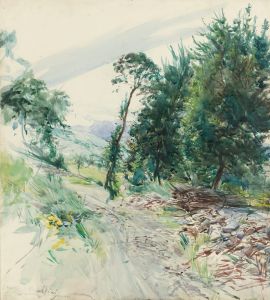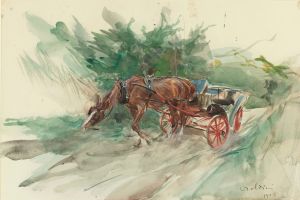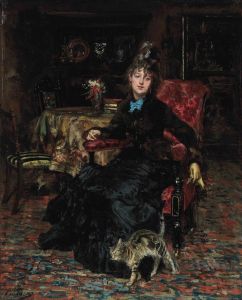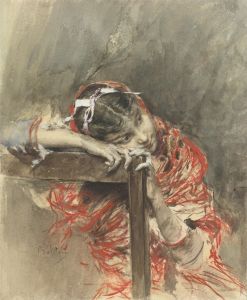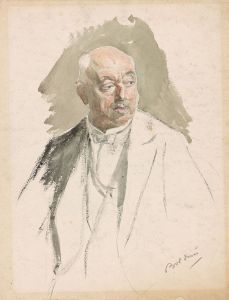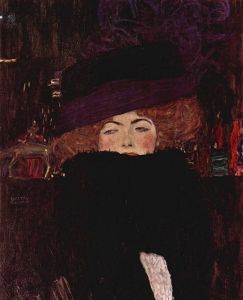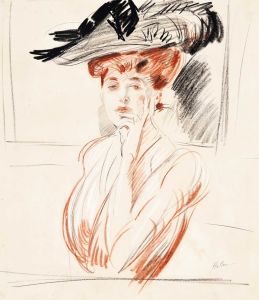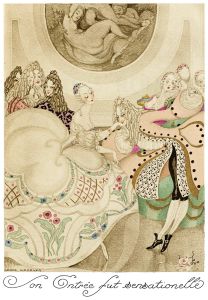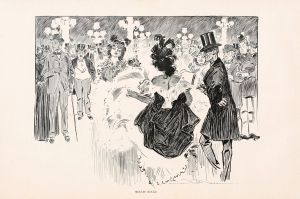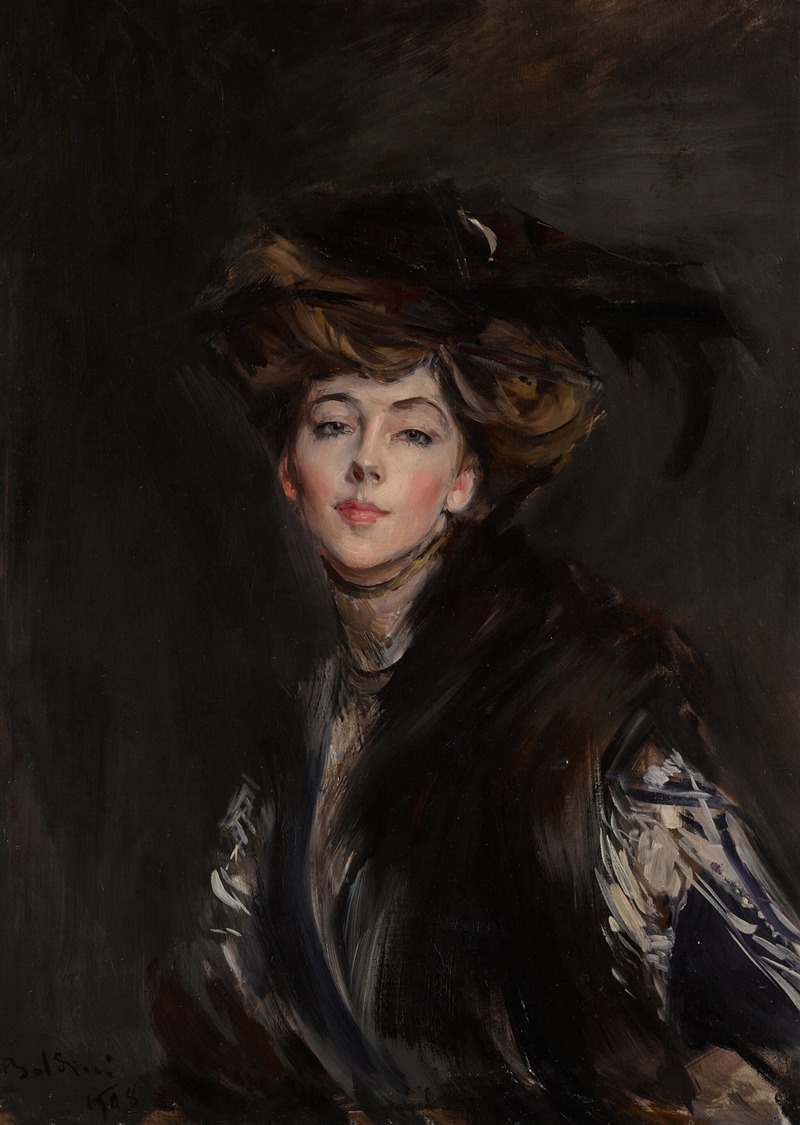
Portrait of Miss Anita Stewart
A hand-painted replica of Giovanni Boldini’s masterpiece Portrait of Miss Anita Stewart, meticulously crafted by professional artists to capture the true essence of the original. Each piece is created with museum-quality canvas and rare mineral pigments, carefully painted by experienced artists with delicate brushstrokes and rich, layered colors to perfectly recreate the texture of the original artwork. Unlike machine-printed reproductions, this hand-painted version brings the painting to life, infused with the artist’s emotions and skill in every stroke. Whether for personal collection or home decoration, it instantly elevates the artistic atmosphere of any space.
Giovanni Boldini, an Italian painter renowned for his dynamic brushwork and elegant portraiture, painted "Portrait of Miss Anita Stewart" in the early 20th century. Boldini was a prominent figure in the art world, particularly known for his portraits of high society figures during the Belle Époque period. His work is characterized by a distinctive style that combines realism with a sense of movement and vitality, often capturing the essence and personality of his subjects.
Anita Stewart, the subject of this portrait, was an American socialite and a prominent figure in the social circles of her time. Born in 1886, she was the daughter of William Rhinelander Stewart and Annie Armstrong. Anita Stewart gained significant attention in 1909 when she married Prince Miguel of Braganza, becoming a member of the European nobility. Her marriage to the prince, who was a member of the exiled Portuguese royal family, elevated her status in both American and European high society.
Boldini's portrait of Anita Stewart exemplifies his ability to capture the elegance and sophistication of his subjects. The painting showcases Stewart in a poised and graceful manner, reflecting her status and personality. Boldini's use of fluid brushstrokes and his attention to detail are evident in the rendering of her attire and the subtle expressions on her face. The portrait is a testament to Boldini's skill in portraying the fashionable elite of his time, highlighting his ability to blend realism with an impressionistic touch.
The painting is part of Boldini's extensive body of work that includes numerous portraits of aristocrats, celebrities, and influential figures of the late 19th and early 20th centuries. His portraits are celebrated for their lively execution and the way they capture the spirit of the Belle Époque era. Boldini's work, including the "Portrait of Miss Anita Stewart," is held in high regard for its artistic merit and historical significance, offering a glimpse into the world of the elite during a time of cultural and social transformation.
Boldini's influence extended beyond his lifetime, as his portraits continue to be studied and admired for their technical prowess and the insight they provide into the personalities and fashions of the era. His ability to convey the character and status of his subjects through his art has cemented his place as one of the leading portraitists of his time.
The "Portrait of Miss Anita Stewart" remains an important piece within Boldini's oeuvre, reflecting both the artist's unique style and the cultural milieu of the period. It serves as a valuable historical document, capturing the essence of a notable figure in early 20th-century society and exemplifying the artistic trends of the Belle Époque.






